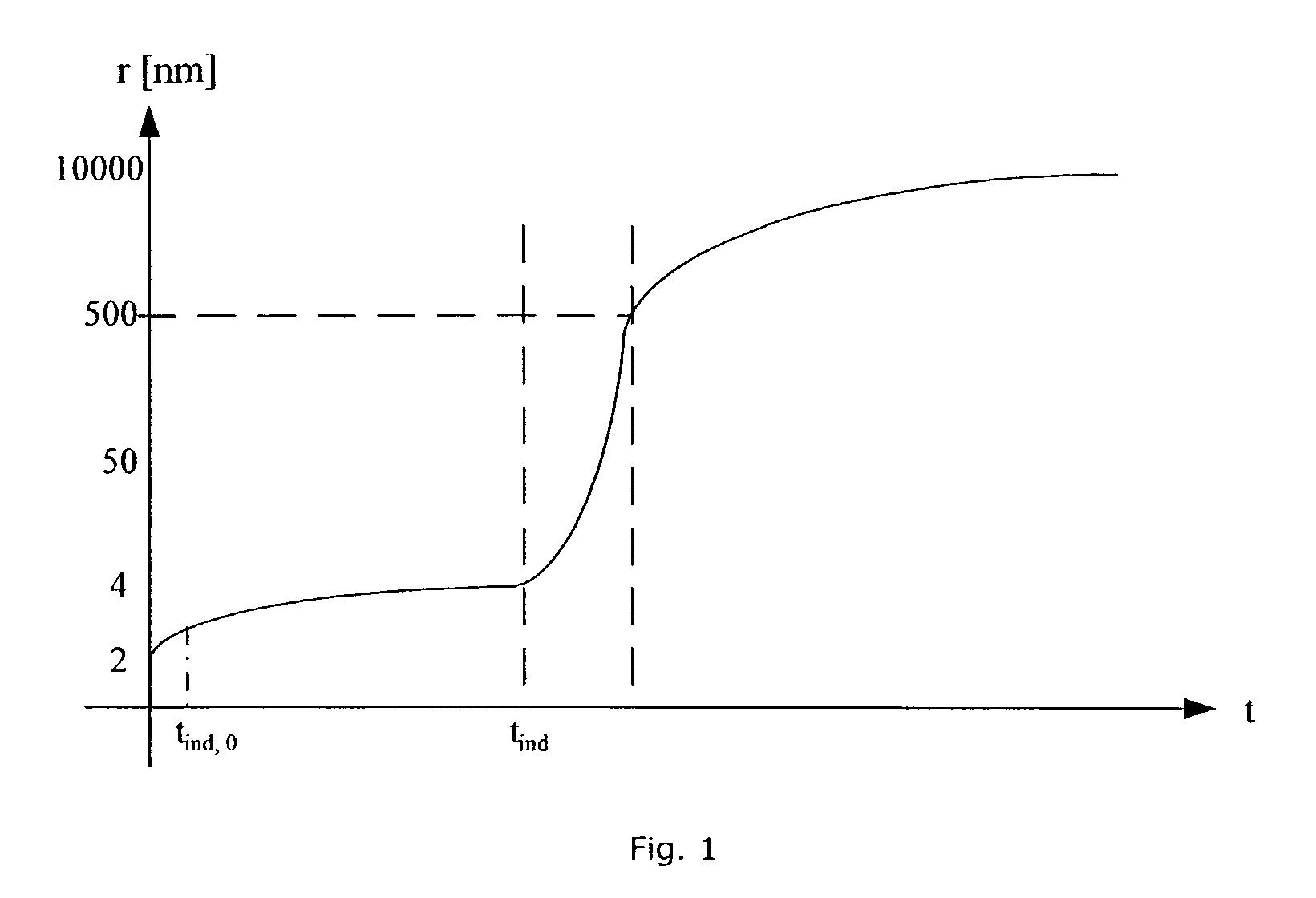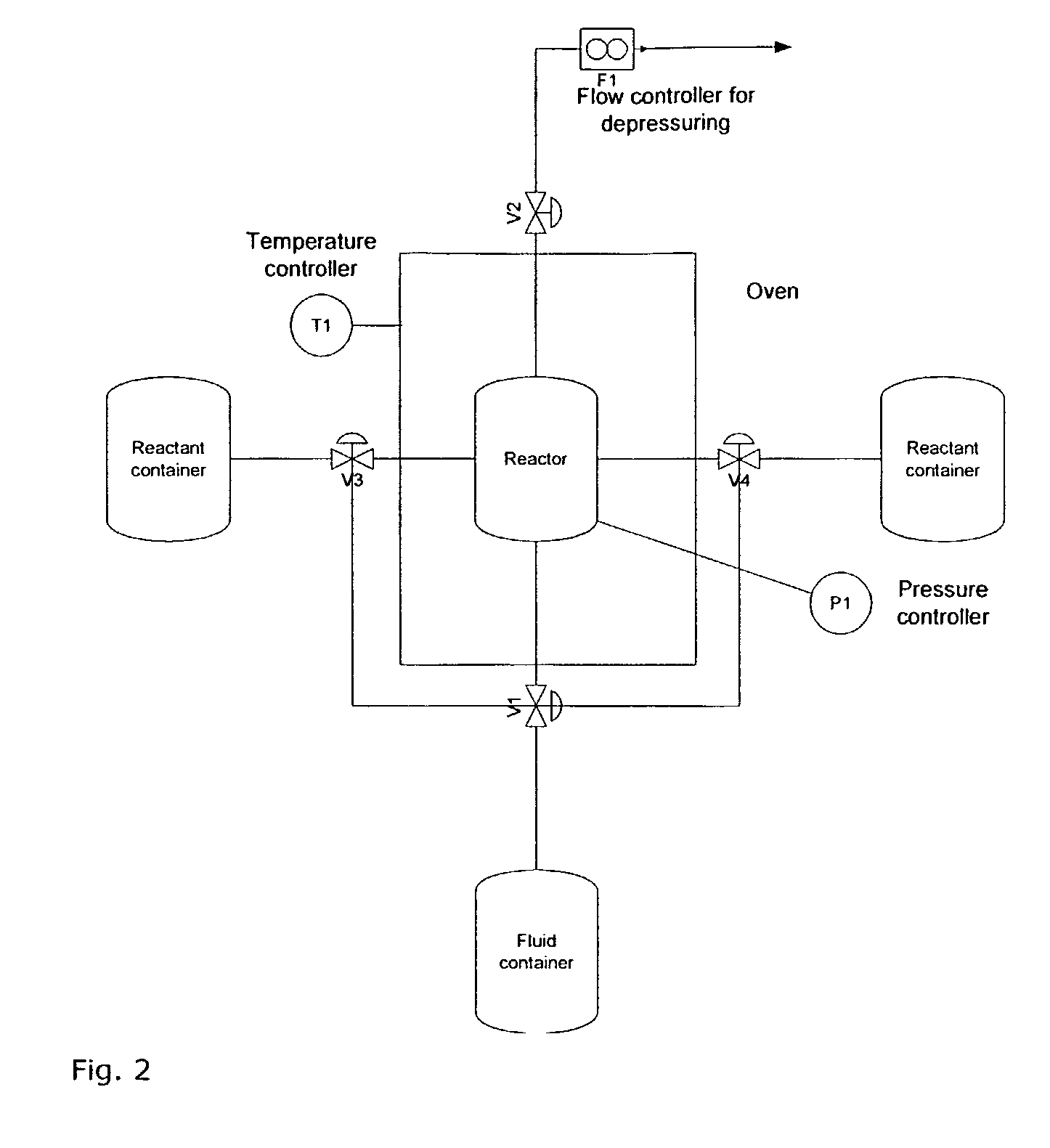Method and apparatus for production of a compound having submicron particle size and a compound produced by the method
a technology of compound and submicron particle size, which is applied in auxillary shaping apparatus, nanotechnology, nanotechnology, etc., can solve the problems of difficult to vary process parameters, reduce specific surface area by up to 80%, and reduce the total energy budget. , the effect of reducing the cost of the final produ
- Summary
- Abstract
- Description
- Claims
- Application Information
AI Technical Summary
Benefits of technology
Problems solved by technology
Method used
Image
Examples
example 1
Production of Nano-Sized TiO2
[0219]In this example the production of nano-sized crystalline TiO2 by a batch process is described. The precursor in this example is a 97% titaniumtetraisopropoxide, Ti(OPri)4, from Sigma Aldrich. It will in the following be referred to as TTIP. The TTIP reacts with distilled water in a supercritical environment including reactor filling material acting as seeds or catalyst material. The supercritical fluid is in this example CO2. The experimental set up is shown in FIG. 2 and the batch process is generically described in the Equipment and Preparation section.
[0220]The process equipment consists of a reactor where the supercritical sol-gel reaction takes place. The reactor in this example comprises reactor filling material in the form of fibres. The reactor is placed in an oven where the pressure and temperature can be controlled. The pressure can be changed from 1-680 bars depending on the desired product and is controlled by a pump (P1). The tempera...
example 1a
Production of TiO2 With Changing Reaction Times
[0225]In the following example the consequence of changing the process time is described. The experiment is a standard experiment as described in example 1 but the reaction time is changed. In the following table the influence of changing the process time is shown.
TABLE 6Characteristics of TiO2 powders produced at different reaction times2 hours4 hours8 hoursCrystalline PhaseAnataseAnataseAnataseτ [nm]8.510.710.7Crystallinity [%]39.540.039.4
[0226]By changing the reaction time the primary particle size changes slightly from 2 to 4 hours but does not change from 4 to 8 hours. The increase of the reaction time does not result in an increase of the crystallinity of the samples. The crystallinity is at all reaction times approximately 40%.
example 1b
Production of TiO2 at 43° C.
[0227]In this example a standard experiment is carried out as described in example 1 but the temperature is lowered to 43° C. The results from this experiment is shown in table 7
TABLE 7Characteristics of TiO2 powders produced at 43° C.TiO2Crystalline phaseAmorphousτ [nm]—CrystallinityAmorphousRg [nm]2.8
[0228]It is shown in table 7 that the powder is amorphous when produced at 43° C. The size of the primary particles is determined by SAXS and is as low as 5.6 nm in diameter.
PUM
| Property | Measurement | Unit |
|---|---|---|
| temperature | aaaaa | aaaaa |
| temperature | aaaaa | aaaaa |
| temperature | aaaaa | aaaaa |
Abstract
Description
Claims
Application Information
 Login to View More
Login to View More - R&D
- Intellectual Property
- Life Sciences
- Materials
- Tech Scout
- Unparalleled Data Quality
- Higher Quality Content
- 60% Fewer Hallucinations
Browse by: Latest US Patents, China's latest patents, Technical Efficacy Thesaurus, Application Domain, Technology Topic, Popular Technical Reports.
© 2025 PatSnap. All rights reserved.Legal|Privacy policy|Modern Slavery Act Transparency Statement|Sitemap|About US| Contact US: help@patsnap.com



